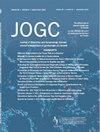Limited Impact of COVID-19 on Pre-existing Trends in Postpartum Infection
IF 2.2
Q2 OBSTETRICS & GYNECOLOGY
引用次数: 0
Abstract
Objectives
To assess whether postpartum infection rates decreased among hospital deliveries during the pandemic.
Methods
We designed a pre-post pandemic comparison study of postpartum infection rates among hospital births in Québec, Canada between 2017 and 2022. We calculated postpartum infection rates per 10 000 deliveries and compared the prepandemic and pandemic periods using risk ratios (RRs) and 95% CIs from log-binomial multivariable regression models. We stratified the analysis by mode of delivery and adjusted the models for maternal age, parity, comorbidity, and socioeconomic deprivation. We used autoregressive interrupted time series analysis to verify whether the pandemic impacted pre-existing trends in postpartum infection rates.
Results
Postpartum infections were less frequent during the pandemic. Among patients who underwent cesarean deliveries, there was a 30% reduction in the risk of postpartum infection during the pandemic compared with the prepandemic period (RR 0.70; 95% CI 0.62–0.79, P < 0.001). Among patients who underwent vaginal deliveries, there was a 12% reduction in risk (RR 0.88; 95% CI 0.81–0.97, P = 0.008). However, interrupted time series analysis indicated that the reduction in postpartum infections began as early as 2010 and that these pre-existing trends persisted during the pandemic.
Conclusions
Infection rates have decreased over time, especially among cesarean deliveries. The pandemic did not significantly alter the long-term trend in decreasing postpartum infection rates.
Covid-19对产后感染既有趋势的影响有限。
目的:评估大流行期间住院分娩的产后感染率是否下降。方法:我们设计了一项2017年至2022年加拿大魁北克省医院分娩产后感染率的大流行前后比较研究。我们计算了每10,000次分娩的产后感染率,并使用对数二项多变量回归模型的风险比(RR)和95%置信区间(CI)比较了大流行前和大流行期间。我们根据分娩方式对分析进行分层,并根据产妇年龄、胎次、合并症和社会经济剥夺调整模型。我们使用自回归中断时间序列分析来验证大流行是否影响了产后感染率的先前趋势。结果:大流行期间产后感染发生率较低。在剖宫产患者中,与大流行前相比,大流行期间产后感染的风险降低了30% (RR 0.70;95% ci 0.62-0.79;结论:随着时间的推移,感染率有所下降,尤其是剖宫产。大流行并未显著改变产后感染率下降的长期趋势。
本文章由计算机程序翻译,如有差异,请以英文原文为准。
求助全文
约1分钟内获得全文
求助全文
来源期刊

Journal of obstetrics and gynaecology Canada
OBSTETRICS & GYNECOLOGY-
CiteScore
3.30
自引率
5.60%
发文量
302
审稿时长
32 days
期刊介绍:
Journal of Obstetrics and Gynaecology Canada (JOGC) is Canada"s peer-reviewed journal of obstetrics, gynaecology, and women"s health. Each monthly issue contains original research articles, reviews, case reports, commentaries, and editorials on all aspects of reproductive health. JOGC is the original publication source of evidence-based clinical guidelines, committee opinions, and policy statements that derive from standing or ad hoc committees of the Society of Obstetricians and Gynaecologists of Canada. JOGC is included in the National Library of Medicine"s MEDLINE database, and abstracts from JOGC are accessible on PubMed.
 求助内容:
求助内容: 应助结果提醒方式:
应助结果提醒方式:


